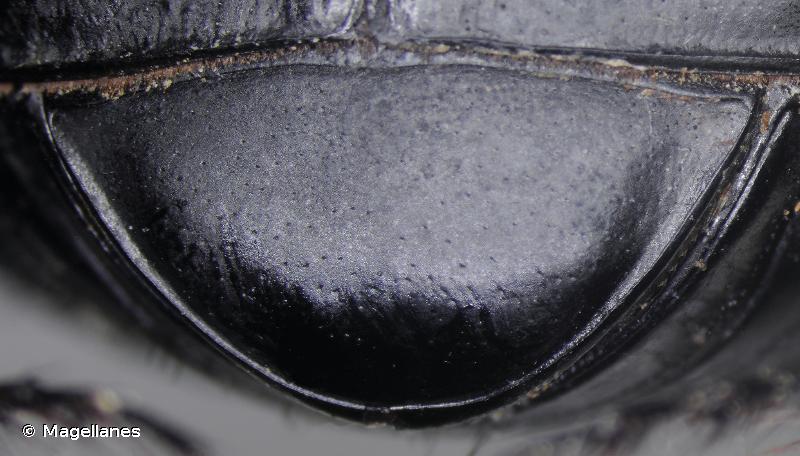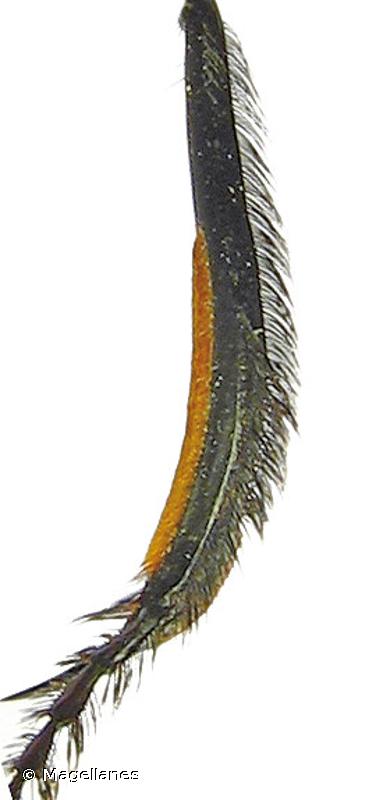
cd_nom

| Author : Magellanes |
 |
To get the picture, please visit:
Any reuse of one or more photographs on this site is subject to an authorization request from the author.
Link to the Code of Intellectual Property (Legifrance)

| Author : Magellanes |
 |
To get the picture, please visit:
Legend: Base pronotum
Any reuse of one or more photographs on this site is subject to an authorization request from the author.
Link to the Code of Intellectual Property (Legifrance)

| Author : Magellanes |
 |
To get the picture, please visit:
Legend: Pygidium
Any reuse of one or more photographs on this site is subject to an authorization request from the author.
Link to the Code of Intellectual Property (Legifrance)

| Author : Magellanes |
 |
To get the picture, please visit:
Legend: Femelle
Any reuse of one or more photographs on this site is subject to an authorization request from the author.
Link to the Code of Intellectual Property (Legifrance)

| Author : Magellanes |
 |
To get the picture, please visit:
Legend: Mâle
Any reuse of one or more photographs on this site is subject to an authorization request from the author.
Link to the Code of Intellectual Property (Legifrance)

| Author : Magellanes |
 |
To get the picture, please visit:
Any reuse of one or more photographs on this site is subject to an authorization request from the author.
Link to the Code of Intellectual Property (Legifrance)

| Author : H.Bouyon |
 |
To get the picture, please visit:
Bouyon Hervé
herve.bouyon@wanadoo.fr
Any reuse of one or more photographs on this site is subject to an authorization request from the author.
Link to the Code of Intellectual Property (Legifrance)
Taille : 26 à 40 mm
Diagnose :
Grande taille. Protibias dépourvus de tarses. Métatibias prolongés en-dessous par une lamelle. Paramères assymétriques. Ces particularités morphologiques caractérisent le sous-genre Scarabaeus.
Identification :
Le front présente 2 petits tubercules. La base du pronotum présente des zones lisses, elle est crénelée et marquée d'un sillon net qui longe les crénelures.
Confusion possible :
Scaeabaeus typhon (Fischer, 1823)
Scarabaeus pius (Illiger, 1803)
Périodes d'observation de l'adulte :
Activité d'avril à octobre. Cette espèce est surtout printanière avec un pic de mai à juin. Active en début de matinée (9 à 11h) et en fin d'après-midi (16 à 18h).
Biologie-éthologie :
Coprophage de type télécopride. Nette préférence pour les excréments bovins et ovins. Parfois une activité nécrophage. Espèce sténoèce. Exclusivement dans les biotopes bien exposés, le plus souvent dans des sites à moins de 50 m d'altitude. L'espèce préfère les sols sablo-limoneux à l'arrière des cordons dunaires.
Biogéographie :
En France continentale l'espèce est représentée par de faibles populations résiduelles au statut très précaire alors qu'en Corse l'espèce est encore localement assez abondante.
Références :
BARAUD (J.), 1992, Coleoptères scarabaeoidea d'Europe. Faune de France et des régions limitrophes 78 : 1-856, Société Linnéenne de Lyon.
Patrick Prévost(),2020
Continental
Metropolitan France
Overseas
Marine
Metropolitan France
Overseas
The map presents a summary at the 10 x 10 km grid of the observation data for the species transmitted to the SINP. These data have been subjected to validation filters.
The map presents a reference distribution layer of the species at the scale of departments and marine sectors. The presence and absence data were established by expertise within a network of partners. This reference distribution is used in the validation process of the SINP data at the INPN level.
Corresponds to a report on the basis of at least one observation proved within a period of 10 years (20 years for little-known invertebrates) preceding the year and no presumption of extinction since obtaining the last data nor doubt on reproductive and implemented nature of this population. For migratory species, the presence indicated concerns areas of reproduction.
This status is based on one or more of the following criteria:
This point covers the absence, more difficult by nature to demonstrate than presence. This status is based on one or more of the following criteria:
This status must be assigned to a department in which the presence of the species is casual.
Particular case of absence due to a proven extinction less than a half century ago (older disappearances are treated as "no probable or definite").
In the state of knowledge, we can not comment on the presence or absence in the current department. This is the default status when not comprised in one of the previous categories or whenever there is doubt.
The map shows the global distribution of the species based on GBIF data (Global Biodiversity Information Facility).
